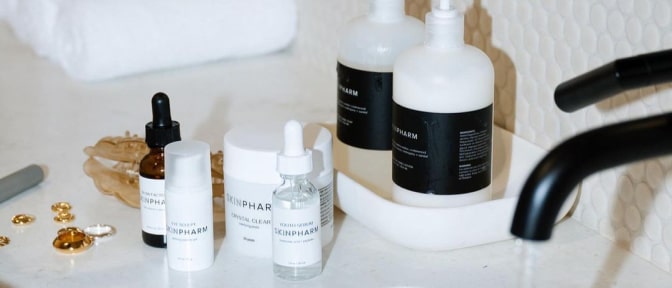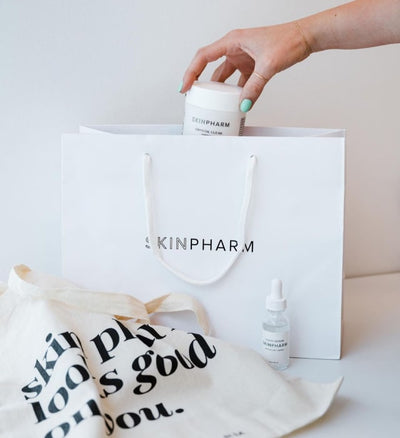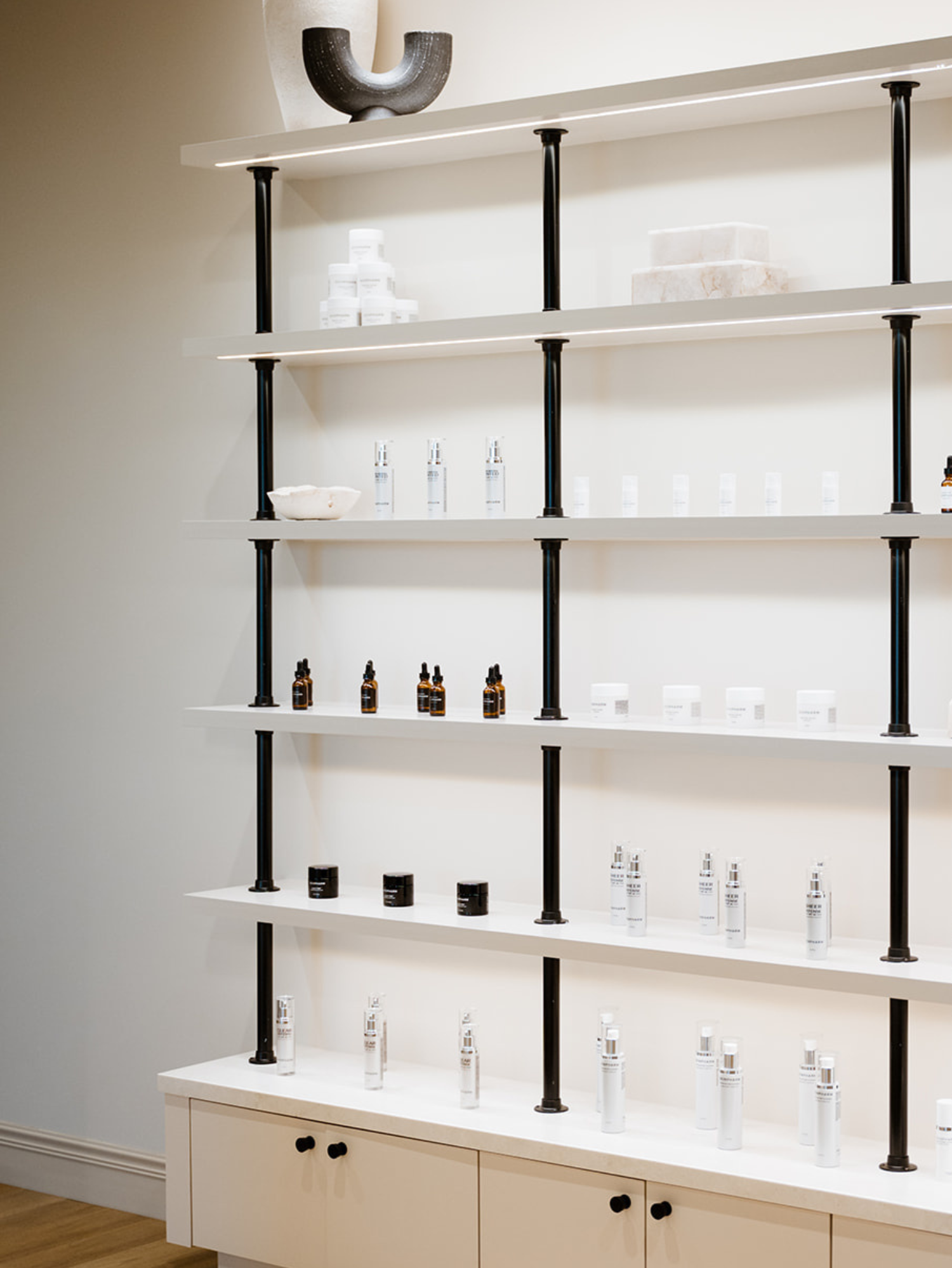Shop skin care
Clinics
VISIT OUR 9 CLINICS →
HOURS
Monday – Friday
9:30a – 5:30p
Balancing Your Skin’s pH Levels for Flawless Skin

When finding ways to keep your skin balanced and healthy, it's important to consider skin pH.
Most people rarely think about this, but different factors can impact your skin’s pH and sway it away from its natural state of balance — leading to many common skin issues and concerns.
Sensitivity, breakouts, irritation and dryness can all be related to an out-of-balance skin pH, but there are also ways to support a healthy skin pH. Let's discuss all things pH so you can keep your skin looking and feeling its best.
What is your skin’s pH?
pH (or potential of hydrogen) measures where a substance’s hydrogen concentration falls on a scale of one to 14 when dissolved in water, with seven being neutral, anything under seven being acidic and anything over seven being alkaline (or basic).
Different substances have different pH values. For example, water typically has a neutral pH of seven. Baking soda (sodium bicarbonate) has an alkaline (basic) pH of 8.3, and lemon juice has an acidic pH between two and three. The skin also sits on the acidic side of the pH scale — usually at or slightly below five. This pH is crucial for the stability and function of the skin’s microbiome.
Different factors can also play a role in skin pH. For instance, those with more male hormones (like a higher level of testosterone) or people with an oilier skin type and more sebum tend to be slightly more acidic.
As we age, our skin also becomes more alkaline (basic), especially for people as they go through menopause. This pH change can lead to increased sensitivities and irritation.
External factors, like skin care products and even the water we use to wash our faces with, can also influence its pH. Anything with a different pH — either more acidic or more alkaline (basic) — can change your skin's pH.
Although our skin is very resilient and balances itself back out fairly quickly, constant fluctuation can cause serious disruption, irritation and sensitivity.
The acid mantle
When discussing the skin’s pH balance, it’s key to discuss the acid mantle, which is a film of acidity on the skin’s surface. The acid mantle is a mixture of sebum and sweat that protects the skin by inhibiting the growth of pathogens because bacteria thrive in a more alkaline environment.
How can you tell if your skin’s pH balance is out of whack?
Many of the most common skin conditions and concerns can be traced back to an out-of-balance pH level. Here are some of the symptoms you might experience when this happens.
Tight, dry skin
Skin that falls on the more alkaline (basic) side of the pH scale — above seven — can have a much harder time retaining water. Your skin barrier (or moisture barrier) is crucial for keeping moisture inside the skin, and a compromised skin barrier can lead to transepidermal water loss (or TEWL).
When your skin experiences TEWL, water evaporates through the epidermis and into the air, leading to dryness, tightness and discomfort.
Irritation
Many common skin issues are directly related to skin irritation. When it occurs on a chronic basis, irritation in the skin can cause skin conditions to flare up (especially for those with a genetic predisposition to them). Whether you have more acidic skin or more alkaline skin, this can impact your skin’s microbiome and make it a lot more susceptible.
Sensitivity
pH can also impact your skin barrier function. If your pH is out of balance, the skin barrier may not be as effective. One of the primary symptoms of this pH imbalance is sensitive skin, which can cause even the most gentle cleansers, serums and moisturizers to burn when you apply them.
Breakouts
If you have oily skin that's prone to breakouts, you may want to consider your skin’s pH as a possible cause. While your natural oils can help to condition and moisturize the skin better than any lotion or cream, they’re also a breeding ground for acne-causing bacteria. If your skin’s pH is off, then your skin's microbiome may not be able to fend off these breakout-causing bacteria.
What can you do to balance and protect your skin’s pH level?
If you're concerned that you're skin's pH is either more acidic or more alkaline, there are things that you can do to help bring it back into balance.
Water temperature is one of those factors. Water that's too hot can break down the lipids that comprise your skin barrier, making it more vulnerable. Water's natural pH is also higher than the skin’s average pH.
Ingredients that help support your skin barrier, like hyaluronic acid, vitamin C, squalene and ceramides, can also help your skin look and feel healthy and balanced. Using a supportive antioxidant serum like Youth Serum can help keep your pH where it should be and encourage a healthy environment for your crucial skin microbiome.
Skin care products with ingredients like kaolin clay, such as our Clay Time polishing charcoal mask, have a slightly acidic pH of around five (much like the skin). Using these products can help support a balanced skin pH by gently exfoliating, brightening and clarifying the skin. You may want to incorporate these types of products into your skin care routine a few times a week.
You may also want to stay away from skin care products that are too harsh for your skin. This can include harsh cleansers and soaps, any products with sulfates, drying toners and harsh detergents.
Exfoliating your skin is great when you do it gently and safely, but over-exfoliation can damage your acid mantle, strip away your sebum and impact your pH. In general, try not to exfoliate more than a few times a week, and pay attention to your skin — if it feels too sensitive, take a break and focus on giving your skin additional hydration to soothe it.
The bottom line...
Healthy skin is balanced skin. With an ideal skin pH of around five, anything above or below that can lead to skin issues like breakouts, more visible fine lines and wrinkles or a loss of hydration. When you know how each product in your routine impacts your pH, you can be more intentional about keeping your skin balanced and healthy.
To learn more about how to take care of your unique skin, schedule a consultation with one of our skin care providers today.
SOURCES:
Natural skin surface pH is on average below 5, which is beneficial for its resident flora | PubMed
The human skin microbiome | Nature Reviews Microbiology
Transepidermal Water Loss - an overview | ScienceDirect Topics
Impact of Water Exposure and Temperature Changes on Skin Barrier Function | PMC

















